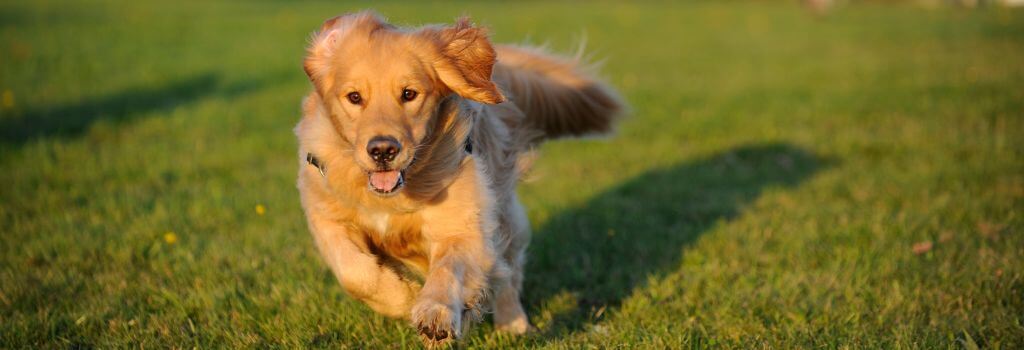If you're a dog owner, you've likely witnessed the hilarious spectacle of your furry friend suddenly bursting into a wild sprint around the house or yard. These moments of intense, positive energy are commonly known as "zoomies." But what exactly are zoomies, why do they happen, and what do they mean?
Let’s have some fun today and explore the silly nature and delightful world of dog zoomies.
What Are Dog Zoomies?
Has your dog ever zoomed past you, around the room, up on the couch, back to the door, and then did it all over again… and again… and again? And let’s not leave out the hilarious moment when they randomly stop to stare at you with that doggish grin! These are dog zoomies. Still not sure what a zoomie is? Take a peek online Pet parents around the world catch their pups in these loops, and it can keep you entertained and laughing for hours.
These periods are actually formally known as Frenetic Random Activity Periods (FRAPs). They are classified as sudden bursts of high-energy activity where dogs run around in a seemingly uncontrolled manner. During these episodes, dogs may sprint in circles, dart back and forth, and exhibit exuberant playfulness. While zoomies can occur at any time, they are most commonly observed in the morning, after a bath, or following a period of rest.
Rest assured, zoomies are natural and healthy behaviors in dogs! They reflect your pet’s need to release pent-up energy and indicate that your dog is happy and comfortable in its environment. You may notice your young dog or puppy having these activity periods more frequently than an older pet. Whenever and wherever these occur, take it as a positive note—they are excited to be with you!

5 Facts About Dog Zoomies
- Breed Differences: While all dogs can get zoomies, some breeds are more prone to this behavior than others. High-energy breeds like Border Collies, Jack Russell Terriers, and Labrador Retrievers often exhibit more frequent and intense zoomies.
- Age Factor: Puppies and young dogs are more likely to experience zoomies due to their higher energy levels. However, older dogs can still enjoy the occasional burst of energy.
- Zoomie Zones: Dogs tend to have favorite spots for their zoomies. Common areas include open spaces in the yard, long hallways, or around furniture in a circular pattern.
- Post-Bath Zoomies: Many dogs experience zoomies after a bath. This is likely due to the excitement of being clean and the need to shake off the excess water and energy.
- Indoor Safety: If your dog gets zoomies indoors, make sure to clear the area of any obstacles or fragile items that could be knocked over. Safety first!
Why Do Dogs Get Zoomies?
Zoomies are a natural way for dogs to release pent-up energy. Especially common in young pups, these frenetic bursts of activity help them burn off excess energy in a fun and engaging manner. Dogs often get zoomies when they're particularly happy or excited, such as when they see their favorite person, receive a new toy, or enjoy a tasty treat. This behavior also ties back to a dog's natural instincts; in the wild, sudden bursts of speed could be crucial for chasing prey or evading predators. So, the next time your furry friend zooms around, know that it's a delightful mix of playfulness and instinct at work.
The Benefits of Doggy Daycare and Regular Exercise
While zoomies are a natural and healthy way for dogs to release excess energy, they also highlight the importance of regular exercise and social interaction for our canine companions. Doggy daycare and consistent physical activity play a significant role in maintaining a dog's overall well-being. At doggy daycare, dogs benefit from a structured environment where they can engage in supervised play with other dogs, promoting both physical fitness and social skills. If your dog enjoys playmates, regular exercise and socialization at our doggy daycare can help your furry friend stay happy and healthy!

Here are some key benefits of doggy daycare:
- Socialization: Regular interaction with other dogs helps improve social skills and reduces anxiety in unfamiliar situations. Well-socialized dogs are generally happier and more confident.
- Mental Stimulation: Activities and games provided at doggy daycare keep dogs mentally stimulated, preventing boredom that can lead to destructive behaviors at home.
- Routine and Structure: A consistent routine can provide a sense of security and stability, helping dogs feel more relaxed and comfortable.
- Activity: Exercise is a great way to reduce stress and anxiety in dogs. It releases endorphins, which are natural mood boosters, helping to keep your dog happy and calm.
- Behavioral Benefits: Regular exercise helps to manage behavioral issues by reducing excess energy and preventing boredom. A well-exercised dog is less likely to engage in destructive behaviors at home.
Do Other Species Experience Zoomies or Frenetic Random Activity Periods?
While dog zoomies are the most commonly observed, many other species also experience similar bursts of energy, also known as Frenetic Random Activity Periods (FRAPs). These intense, seemingly random activities are a fascinating aspect of animal behavior, reflecting a versatile need for play and energy release.
Cats, rabbits, ferrets, and horses all exhibit these energetic behaviors. Recognizing that zoomies are a normal part of animal behavior across various species helps us appreciate the universal need for physical activity and mental stimulation in our pets. Understanding this can enhance our ability to provide a fulfilling and balanced life for our furry friends.
Zipping Up The Zoomies
Zoomies are one of the many joys of having a dog. They showcase dogs' exuberance and playful spirit, reminding us of the simple pleasures in life. Understanding the reasons behind zoomies and embracing the fun can enhance your bond with your furry friend and add an extra dose of happiness to your day. So, the next time your dog starts zooming around, sit back, relax, and enjoy the show!
For more tips and insights on dog behavior, be sure to check out our other blogs and resources. Happy zooming!
If you have questions and you'd like to reach out to us, you can call us directly at (909) 294-7478, or you can email us at sandimaspetclinic@gmail.com. Don't forget to follow us on social media Facebook, Instagram.

